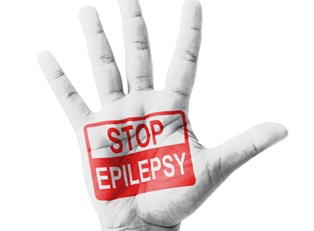When you hear the word "epilepsy," you probably think of one particular kind of seizure, but there are dozens. Seizures affect men and women of all age groups and will most likely occur during childhood or after the age of 55, according to the Cleveland Clinic. Recurring, unprovoked seizures is the hallmark symptom of epilepsy.
Disclaimer: The information provided on this site, including text, graphics, and images, are for informational purposes only—and should not be substituted for professional medical advice, diagnosis, or treatment. Always seek the advice of your physician or other healthcare professional with any questions or concerns you have regarding your health.
Common Epilepsy Signs and Symptoms
There are two major types of epilepsy, which are distinguished based on the areas of your brain involved when the seizure starts: partial (originates in a localized area, usually the temporal lobe) and generalized (seems to start all over the brain). Within each of these two major categories, seizures often affect people with predictable patterns.
Partial Epilepsy Symptoms
Partial epilepsy tends to affect the mind or emotion in some way and can be likened to an intense feeling or a change in sensation; these are often called auras. Auras are perceived by many to be warning signs of an upcoming seizure, although some experts say they may be partial seizures themselves. Patients often struggle to describe auras. In general, partial seizures are either simple or complex, based on whether or not consciousness was lost.
Partial epilepsy symptoms may include:
- Emotional: anger, fear, euphoria
- Sensational: change in smell, touch, taste, intense feeling of familiarity, intense feeling of unfamiliarity
- Physical: blank stare, twitching, mindless repeated gesturing, dizziness, jerking, seeing flashing lights, unusual speech, hallucinations, may or may not lose consciousness
Generalized Epilepsy Symptoms
While many partial seizures are barely noticeable, generalized epilepsy has more stigma attached to it. These seizures are often hard to miss because the effects are much more physical. Patients will usually lose consciousness and may require first aid from injuries caused by falling to the ground or convulsing. The most common of these seizures is the clonic-tonic, otherwise known as the grand mal seizure.
Generalized epilepsy symptoms may include:
- loss of consciousness
- loss of muscle control (falling to the ground)
- muscle constriction (stiffening of back, neck, limbs, turning blue from irregular or limited breathing, jaw clenching, tongue biting)
- irregular or uncontrollable movements (rhythmic shaking or jerking of head and limbs)
- loss of bladder control
- loss of bowel control
Finding Treatment
If you think you may have had a seizure, you should see a doctor immediately.
Distinguishing between epilepsy and other neurological medical conditions can be tricky, particularly for older patients who often live alone or with partners whose observation skills and memory may be limited. Because doctors usually do not witness seizures, they rely heavily on the information provided by their patients. Keeping a seizure diary and jotting down the details will provide clues to help your doctor reach a diagnosis. Include activities that led up to the seizure, what time of day, and how long the seizure lasted. Try to provide observations from witnesses also.
Conditions That Resemble Epilepsy
Some medical conditions provoke symptoms similar to those found in epilepsy. Neurology experts at Stanford University call these "imitators" and have grouped them according to the kinds of behaviors they mimic:
- movement imitators (twitching, twisting, nervous tic)
- loss of consciousness imitators (fainting)
- confusion (mini-stroke)
- psychological (hyperventilation, panic attack, psychogenic nonepileptic seizures (PNES))



